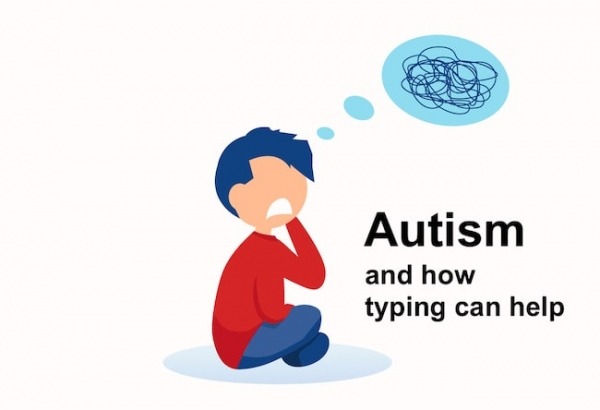6 Tips for teaching EAL pupils

EAL pupils can come from any first language background – and may even speak more than one first language – which is what gives them their English as an Additional Language status. What they have in common is that they are all receiving their education in a predominantly English-speaking country. Some children are absolute beginners and others are highly advanced in English and may even sound like native speakers.
Depending on their age and background, EAL learners might be literate in their mother tongue – which can give them an edge in developing English literacy skills - or they may not yet have learned to read and write.
Many educators enjoy teaching EAL learners as they often bring new perspectives and approaches to problem solving into the classroom. They can also be challenging, for example if you’re teaching a large class and they require a lot of individual attention, or if they are having trouble adjusting to the new school system.
Experienced educators know though that even with no knowledge of a student’s mother tongue and little experience teaching non-native learners, it’s still possible to give children and young adults access to the resources, strategies, and tools they need to be successful at school.
What’s EAL?
In some schools English as an Additional Language (EAL) is referred to as ESOL or English to Speakers of Other Languages. It differs from EFL in that English as a Foreign Language is taught in a country where English is not the dominant language.
Previously, it was more common to hear the term English as a Second Language (ESL) but this implied that individuals learning English only spoke one language, when in fact many were bilingual (or even trilingual!). Today EAL and ESOL are the more common alternatives. You may also encounter schools who use ELL, or English Language Learner.
English can be hard
English is not the easiest language to learn, even for native speakers. It is full of exceptions to the rules and there are far more sounds than there are letters. This means there’s more than one way to write the same sound, and more than one way of pronouncing a letter or a letter combination. This greatly complicates the processes of teaching reading and writing and makes it harder for students to sound out and spell unfamiliar words.
EAL pupils can feel at a disadvantage at school. They may be hesitant to read aloud in front of the class due to fear of misreading. When segmenting the speech stream is difficult, children can struggle to learn through listening alone or be unable to take notes at school. In writing, poor spelling can hold EAL learners back and keep them from expressing themselves fully. They may use simplified structures or fail to unpack more complex phrasing. Even participating in class discussion can be stressful for an EAL student who is not confident enough in his or her language skills to speak spontaneously.
You might also find an imbalance in the fours skills. Some learners develop strong speaking skills but really struggle with reading and writing. Conversely, others prefer books, worksheet resources, and writing assignments, and shy away from class discussion.
In some of these cases, it’s possible for an EAL pupil to struggle with diagnosed (or undiagnosed) learning difficulties, including dyslexia. English is a particularly tricky language for learners with dyslexia to master, given its irregularities.
6 Tips for teaching EAL pupils
-
Give them vocabulary. Teaching vocabulary enables students to be more successful at school, whether it’s for a classroom activity, a homework assignment or a subject in general. This is particularly the case for EAL learners who are often behind their native speaker peers when it comes to English vocabulary. Without receptive knowledge of keywords, it’s difficult to make much meaning out of content, let alone use the words in productive writing and speaking exercises.

-
Give them tools. It’s not always possible to be there to provide vocabulary explanations and assist EAL learners in unpacking difficult material. That’s why it’s important to ensure children have the tools they need to continue learning on their own and outside of a school environment. You may want to suggest a series of language apps for a smartphone or tablet, including a multi-modal dictionary, flashcard apps and/or English language and vocabulary games. Many learners will also benefit from access to a typing program – even better if the program is teaching them a new skill and helping them master English spelling at the same time!
- Give them strategies. Teaching an older child or young adult a new language at school is very different from how children acquire their mother tongue in infancy. It takes deliberate measures on the part of the learner to enhance aptitude for language, get to grips with a new sound system, parse speech, acquire vocabulary and negotiate grammar. Students also have to keep their first language from getting in the way and causing them to make mistakes. That’s why teaching strategy instruction is so vital for EAL learners who need to learn as efficiently and effectively as possible. Learn more about teaching reading, writing, and vocabulary strategies to EAL learners.
- Give them time. Every individual processes information at his or her own rate. This applies to English native speaker children but even more so to EAL pupils who are tasked with understanding the concept -- and the medium through which it has been delivered. Unfortunately, education systems can be somewhat rigid in how they allow time for school work. You can help an EAL pupil by ensuring task difficulty levels are appropriate but also that more time is given for homework assignments and assessment. In terms of workload, you will also be aware that an EAL learner might tire sooner as they are undertaking a more cognitively challenging task than their peers. When time-limits cannot be extended, for example during classroom discussion, provide recording devices so the pupil can replay and review the dialogue after school.
- Give them credit. When you are teaching a large class, it is easy to think of EAL learners as in the lower set because they may take longer to catch on to concepts or struggle to express themselves. But language skills are not a reflection of intelligence. It’s important to keep in mind that these learners actually speak two or more languages – which is a huge accomplishment in itself. They may have highly advanced literacy skills and an impressive vocabulary in their mother tongue. They may also be extremely creative and talented individuals regardless of their language skills. Finding resources that can help them develop these talents and strengths is just as important as teaching to their weaknesses.
- Give them praise. An EAL pupil is simultaneously learning new material, a new language and how to learn a language. That’s a lot of learning! Learning English doesn’t happen overnight – it can be a long journey to fluency. They deserve every bit of praise you can send their way to ensure they have the motivation and confidence they need to sustain them.
Multi-modal teaching
Whenever possible, teaching vocabulary words in a multi-modal way is particularly effective. This means you provide images or video, say the words aloud and include the written form. There are plenty of resources for beginners that take this approach, but you may need to develop your own for more advanced students. Adding a kinesthetic element to the learning can also be helpful, particularly for those EAL learners who struggle with specific learning difficulties such as dyslexia and ADD/ADHD. You may want to give EAL pupils a list with definitions or create some flashcards at school that they can practice with at home. Have the learner consider sticky notes on a bathroom mirror so they can multi-task. Self-study vocabulary resources support teachers and learners alike, but they do work best when the material is further reinforced at school.
If teaching vocabulary ahead of time isn’t possible, glossing the words is an effective technique. This entails providing definitions for keywords in the margins of a worksheet or text, or on the board if you are speaking. Note, definitions can be in English, in the student’s first language, or they can be image-based for absolute beginners.
Introducing vocabulary words in context is also a great way to develop knowledge of collocates and more nuanced word meaning, keeping in mind that children need to be familiar with at least 90% of the words in a given text in order to guess the meaning correctly. When the context is not supportive for guessing, learners can end up missing information and feeling demotivated and/or overwhelmed.

More on how teachers can help
The most important thing is to get to know each individual learner so you can guide him or her to the right resources. While many schools use placement tests, diagnostic testing is just a snapshot in time and does not always tell the full story of a learner’s strengths and weaknesses. Start off by thinking about their abilities in the four skills of reading, writing, speaking and listening. Do this based on what you have observed that they can and can’t do. You then want to look for content that is at the i+1 level – that is to say it is one step beyond the learner’s current ability level. Try holding up a finger for every word in a given paragraph that you think the student will not know. If you have five fingers up you may need to choose a different text.
Develop their confidence
Missing out on classroom discussions, being unable to do school work and/or feeling that every text is too hard for you can be discouraging and demotivating. So is making constant mistakes. But fear of the unknown is a language learner’s worst enemy and mistakes are an essential part of learning.
For an EAL pupil to be successful, he or she will need to take risks when it comes to English. Confidence and a positive self-image are thus crucial factors in how willing learners are to do this – especially when it comes to putting themselves out there during school presentations. Programs that develop confidence by providing learners with opportunities to be successful are important – even better if they build language and literacy skills along the way.
Typing in English
Touch-type Read and Spell is a typing program that was originally developed to help learners with dyslexia and other specific learning differences master keyboarding and literacy skills. It employs a multi-sensory approach that stresses accuracy over speed and encourages students to work through material at their own pace.
Modules are short and students see a word on screen, hear it spoken aloud and then type the corresponding keys. This teaches sound-letter correspondence and is great for developing reading and spelling skills for EAL learners of all ages, once the hands are mature enough to sit comfortably on a keyboard.
There are no nonsense letter combinations in TTRS and a whole word approach is adopted from the beginning. Moreover, the course itself follows a carefully sequenced program of English phonics, to develop phonological awareness and teach sight reading. In this way, learners are building confidence and momentum as they gain typing and literacy skills. Hearing, and perhaps replicating the sound as they proceed, assists with pronunciation.
Learn more about helping EAL learners, teaching adults to write, and spelling in English in these articles.
For teachers
TTRS is a program designed to support educators in teaching students touch-typing, with additional emphasis on reading and spelling.
Chris Freeman
TTRS has a solution for you
An award-winning, multi-sensory course that teaches typing, reading and spelling

How does TTRS work?
Developed in line with language and education research
Teaches typing using a multi-sensory approach
The course is modular in design and easy to navigate
Includes school and personal interest subjects
Positive feedback and positive reinforcement
Reporting features help you monitor usage and progress















